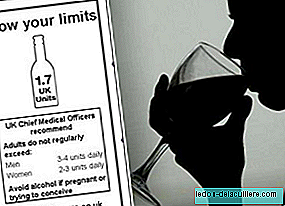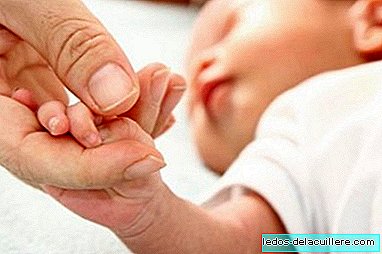
We all want a quiet and uncomplicated pregnancy, but there are few cases in which this dream is truncated. A risky pregnancy supposes that the future mother has to follow special care and recommendations, including some special treatment, because the health of the baby or her own is in danger.
Women can prevent certain risk situations, although others are beyond our control. In principle, no pregnant woman is exempt from becoming part of the "high risk", although this does not mean that we should become obsessed with it, but simply lead a healthy way of life.
There are studies about alternative antenatal care in developed countries that show a percentage of change in criteria (from low to high risk) during pregnancy of 20%, while a similar number of women experience it during childbirth.
That is, there is a group of women who did not present complications and who at one point began to be considered with risks for pregnancy or childbirth.
This may be due to various causes that have to do primarily with changes in the mother's health due to pregnancy: hypertension, preclampsia, diabetes ...
There may also be previous alterations of the mothersuch as heart disease, tendency to hypertension ... or exposure to dangerous external agents such as medications or toxic chemicals ...
In multiparous women, the rate of change is much lower than in first-time mothers. During delivery, it may happen that "the diagnosis" is changed and some risk is considered due to various situations.

A risky birth
When talking about what a “normal birth” is, we have already seen that WHO indicated that such definition would depend greatly on risk assessments and local criteria. That is, at least not all risks are the same for all women or in all contexts.
Of course, with a historical criterion a great advance is detected in the overcoming of old risks that today are controlled by means of prenatal observation or adequate medical treatments.
If we have a risky pregnancy, we will have to take adequate control and care, and perhaps the delivery is conditioned by that risk, although it does not have to be this way. According to the WHO, the delivery and delivery of many pregnant women classified as high risk have a normal course, so, in principle, it does not seem that adopting measures such as caesarean section are justified in all cases of risk.
Usually, between 70 and 80% of all pregnant women can be considered as “low risk” at the beginning of delivery. Although there is also the opposite case, and it is that a pregnant woman who is supposed to be at low risk when labor begins can at any time have a complicated birth, hence the importance of having adequate professional assistance.
According to WHO, it is essential that women can be transferred to a higher level of assistance if risk factors arise or if complications arise that justify such transfer, something that is obviously not possible in various contexts, such as in many places in the countries Developing. For the delivery attended at home, one of the criteria is precisely the proximity and the possibility of rapid transport to a hospital.
There are many types of risks in pregnancy and many degrees of complications. Even for spontaneous abortion there are certain precautions that we can take. Many times having healthy habits without trying alcoholic beverages, away from tobacco smoke, doing adequate physical activity ... decreases the chances of having pregnancy risks.
In short, with prenatal control and adequate care in most cases risk pregnancy can come to fruition, and childbirth not be affected. We can consult the doctor if we consider that we are predisposed to some risk due to some special physical characteristic.
Photos | superbez and Avenue G on Flickr-CC In Babies and more | Natural abortions: causes and types of abortion, Miscarriage or natural abortion, Mild diseases of the mother can harm the baby, Risks in pregnancy if you suffer from congenital heart disease












